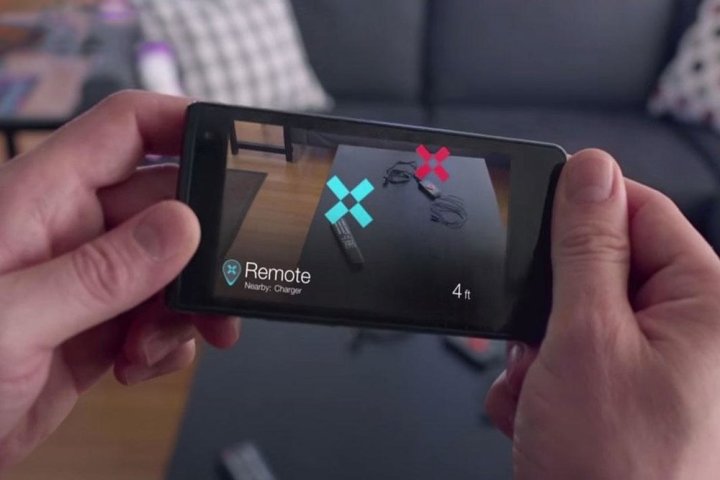
An enhanced Pixie smartphone app makes using the wireless tags much more straightforward. First, it instructs users to take a panoramic scan of the room in which the lost object was last seen. Then, it reveals the location of nearby Pixies with an arrow icon, and an optional augmented reality mode uses additional cues to indicate its position behind objects, walls, drawers, and furniture.
The new Pixie, like the old, relies on wireless positioning techniques to pinpoint the location of things (i.e., wallets, purses, toys, and more) to which it’s affixed. It leverages what Pixie calls the Location of Things (LoT), a “first of its kind” mesh network that operates on the same premise as satellites in the global positioning system (GPS): Pixie devices continually signal and communicate their relative distance from one another over the air. A single “anchor” Pixie uses that data to triangulate the location of other nearby Pixies based on proximity. The more Pixies supplying location data, the greater the accuracy.
It’s the result of a yearlong beta program and intensive development. Amir Bassan-Eskenazi, CEO and co-founder of Pixie Technology, says the Location of Things platform took over three years to develop and resulted in 10 patents.
“Current tracking solutions use basic technology and rely on sounds and alerts to approximate locations,” Bassan-Eskenazi said in a statement. “With Pixie Points and our LoT platforms, we take the guess work out of tracking an object by showing people where an item is hiding through walls and down to inches. We will soon be in a world where everything around us can be given a digital identity, and Pixie looks forward to delivering a future where lost and misplaced items are a thing of the past.”
Pixie Points locates and guide users to items within “inches,” with a specific indoor range of between 30 and 50 feet and outdoor range of 150 feet. That’s much better range than Bluetooth-based trackers, many of which rely on LEDs and alarms to get your attention — a problem if the misplaced object happens to be under, say, a thick rug or mattress.
Pixies Points are water and dust resistant to IP67 standards, to boot, and last 12 months on a charge. The batteries are not replaceable, unfortunately — once a Pixie Point dies, you’ll have to buy a new one.
The Pixie is available for pre-order in a package of two for $50 or four for $100. Both options will ship with a Pixie housing iPhone case.


